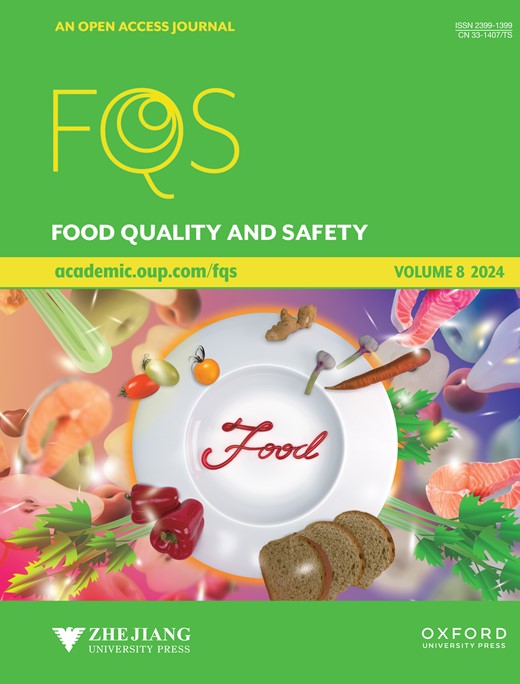Rapid Fabrication of Large-area and Uniform SERS substrate of Au Nano-hemisphere Array and its Application in detection of Malachite Green in Tilapia
IF 3
3区 农林科学
Q2 FOOD SCIENCE & TECHNOLOGY
引用次数: 1
Abstract
Although Surface-enhanced Raman Spectroscopy (SERS) substrates have achieved high sensitivity, it is still difficult to apply these SERS protocols to the on-site detection of real samples due to the SERS substrate being fabrication-complexed or unstable or reproducible or unable to apply in the batch production. Here a large-scale ordered two-dimensional array of Au nano-hemisphere was developed through electron beam vaporization of Au onto the easy-available commercialized anodic aluminum oxide (AAO) template with two-layer nanostructures of different diameters. The uniform Au nano-hemisphere is reliable for SERS detection of malachite green (MG) due to the relative standard deviation (RSD) of the SERS intensities at different locations less than 10%. With the optimized excitation wavelength, solvent effect and pH environment, the linear range of MG detection spans from 10 -10 to 10 -6 mol/L with the limit of detection (LOD) of 4×10 -10 mol/L. The enhancement factor can reach 1.2×10 6. After extracted with acetonitrile and dichloromethane, MG in the spiked tilapia was detected with satisfied recovery. The results indicate that the Au nano-hemisphere array can be expected to greatly facilitate SERS practical applications in detecting harmful food additives and chemicals due to the advantages of chemical inertness, physical robustness, simple fabrication, controllable, large-area uniformity, and large-batch production.金纳米半球阵列大面积均匀SERS基底的快速制备及其在罗非鱼孔雀石绿检测中的应用
虽然表面增强拉曼光谱(SERS)衬底已经取得了很高的灵敏度,但由于SERS衬底制造复杂或不稳定或可重复性或无法应用于批量生产,因此仍然难以将这些SERS方案应用于实际样品的现场检测。本文通过电子束汽化Au,在易于获得的具有不同直径的两层纳米结构的商品化阳极氧化铝(AAO)模板上制备了大规模有序的二维Au纳米半球阵列。均匀的金纳米半球在不同位置的SERS强度的相对标准偏差(RSD)小于10%,可以可靠地用于孔雀石绿(MG)的SERS检测。在优化的激发波长、溶剂效应和pH环境下,MG的检测线性范围为10 -10 ~ 10 -6 mol/L,检出限为4×10 -10 mol/L。增强系数可达1.2×10 6。经乙腈和二氯甲烷提取后,对加标罗非鱼中的MG进行了检测,回收率满意。结果表明,金纳米半球阵列具有化学惰性、物理鲁棒性好、制作简单、可控、大面积均匀和大批量生产等优点,有望极大地促进SERS在有害食品添加剂和化学品检测中的实际应用。
本文章由计算机程序翻译,如有差异,请以英文原文为准。
求助全文
约1分钟内获得全文
求助全文
来源期刊

Food Quality and Safety
FOOD SCIENCE & TECHNOLOGY-
CiteScore
7.20
自引率
1.80%
发文量
31
审稿时长
5 weeks
期刊介绍:
Food quality and safety are the main targets of investigation in food production. Therefore, reliable paths to detect, identify, quantify, characterize and monitor quality and safety issues occurring in food are of great interest.
Food Quality and Safety is an open access, international, peer-reviewed journal providing a platform to highlight emerging and innovative science and technology in the agro-food field, publishing up-to-date research in the areas of food quality and safety, food nutrition and human health. It promotes food and health equity which will consequently promote public health and combat diseases.
The journal is an effective channel of communication between food scientists, nutritionists, public health professionals, food producers, food marketers, policy makers, governmental and non-governmental agencies, and others concerned with the food safety, nutrition and public health dimensions.
The journal accepts original research articles, review papers, technical reports, case studies, conference reports, and book reviews articles.
 求助内容:
求助内容: 应助结果提醒方式:
应助结果提醒方式:


